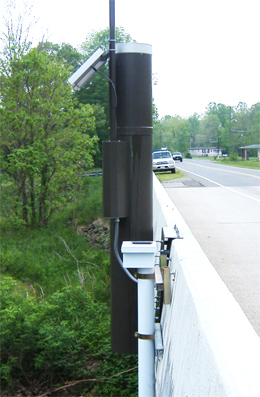




In the late 1970s, the National Weather Service implemented the Integrated Flood Observing and Warning System (IFLOWS) throughout the Appalachian Region of eastern America. As an IFLOWS cooperator, the Virginia Department of Emergency Management (VDEM) has since developed an extensive network of gauging stations for the system using the ALERT communication protocol.
After three decades of use, VDEM's network consisted of nearly 300 aging, nonprogrammable ALERT transmitters. By that time, there had been many advances in monitoring technologies. The ALERT protocol used in their network is a one-way communication protocol and newer protocols with increased capabilities were available. Additionally, new FCC regulations conflicted with the communication methods being used. Because of the need to upgrade the overall state of the network, VDEM began evaluating new generations of datalogging and transmitting equipment for early flood detection and warning.
To bring the system up to date, MapTech of Blacksburg, Virginia, worked with Campbell Scientific to provide turn-key flood-warning packages with new capabilities and flexibility. Using CR200 dataloggers and RF500M intelligent radio modems, Maptech created packaged transmitters that met the specific requirements of VDEM. The packages had to fit inside a 12-inch aluminum standpipe enclosure, popular in ALERT networks. The solution also had to be field upgradable to support technologies like cellular and satellite transmission. The new system easily complied with these requirements and offered many other features, including:
- Fully programmable data acquisition and logging of sensor data
- Programmable feedback control and virtual sensor calculations
- Time- and event-driven ALERT data transmissions
- ALERT data repeating
- ALERT data logging
To date, VDEM has purchased about 90 of these packaged transmitters. Priority for receiving the new equipment has been on remote stations measuring water-surface elevation.